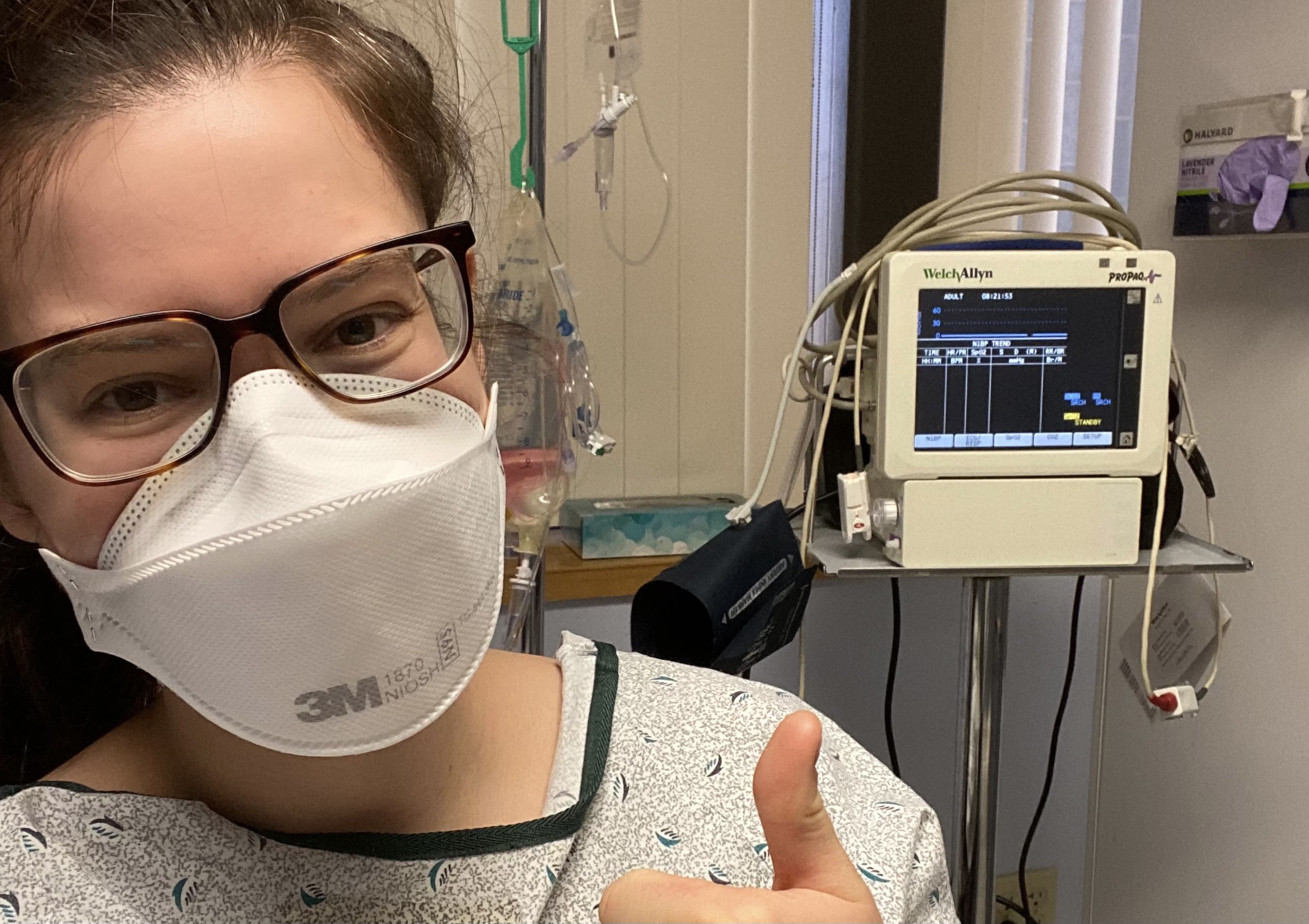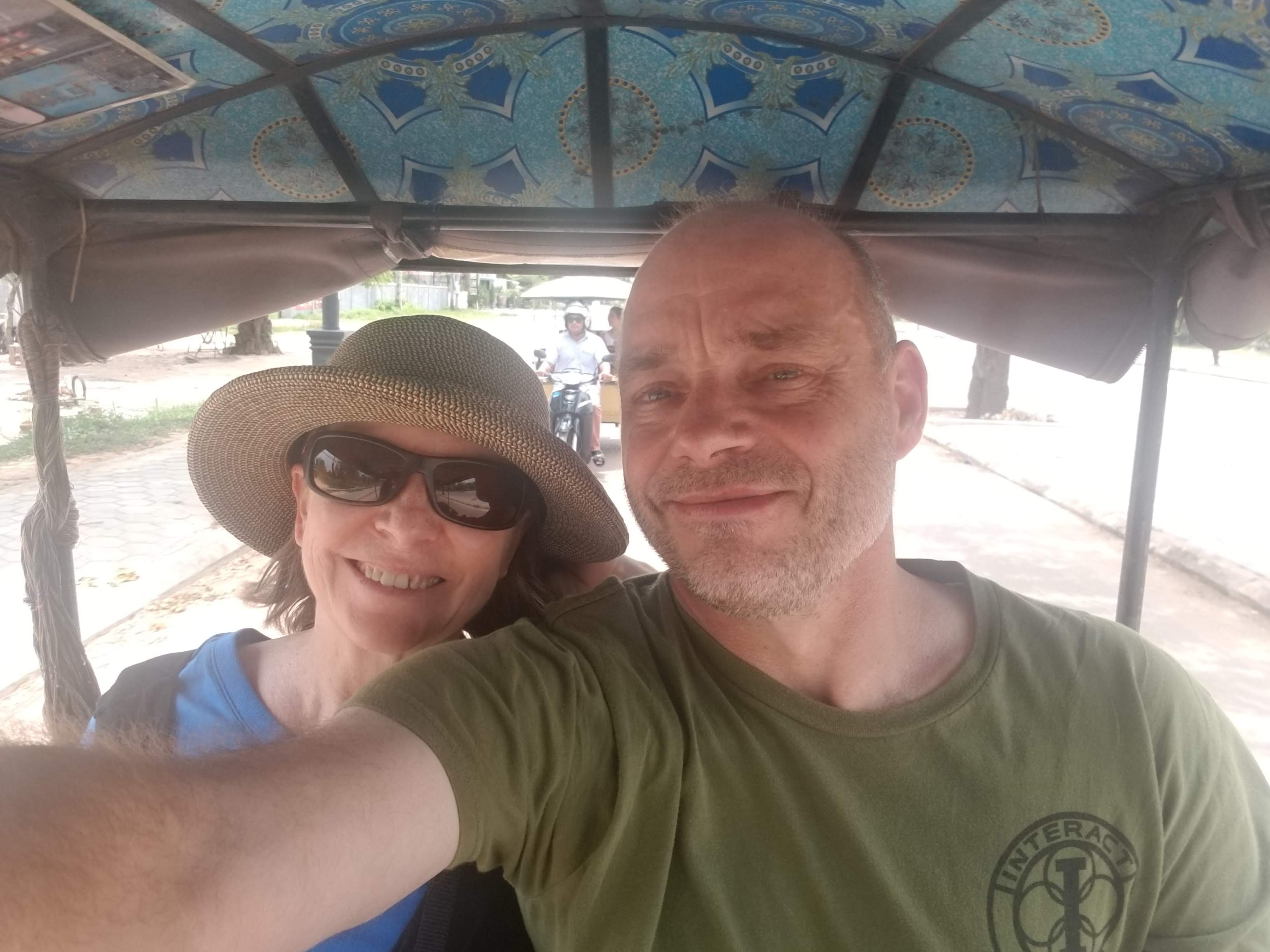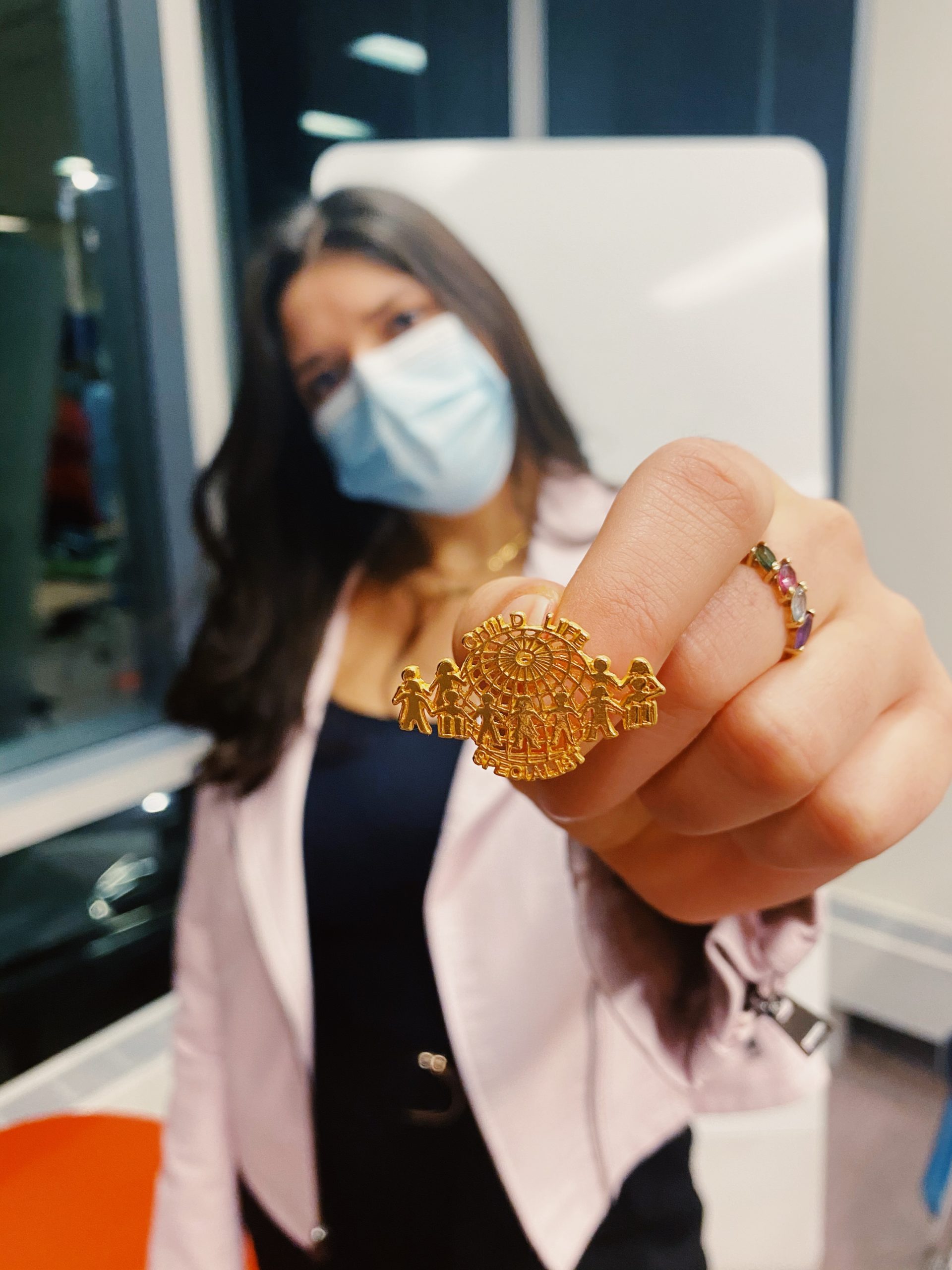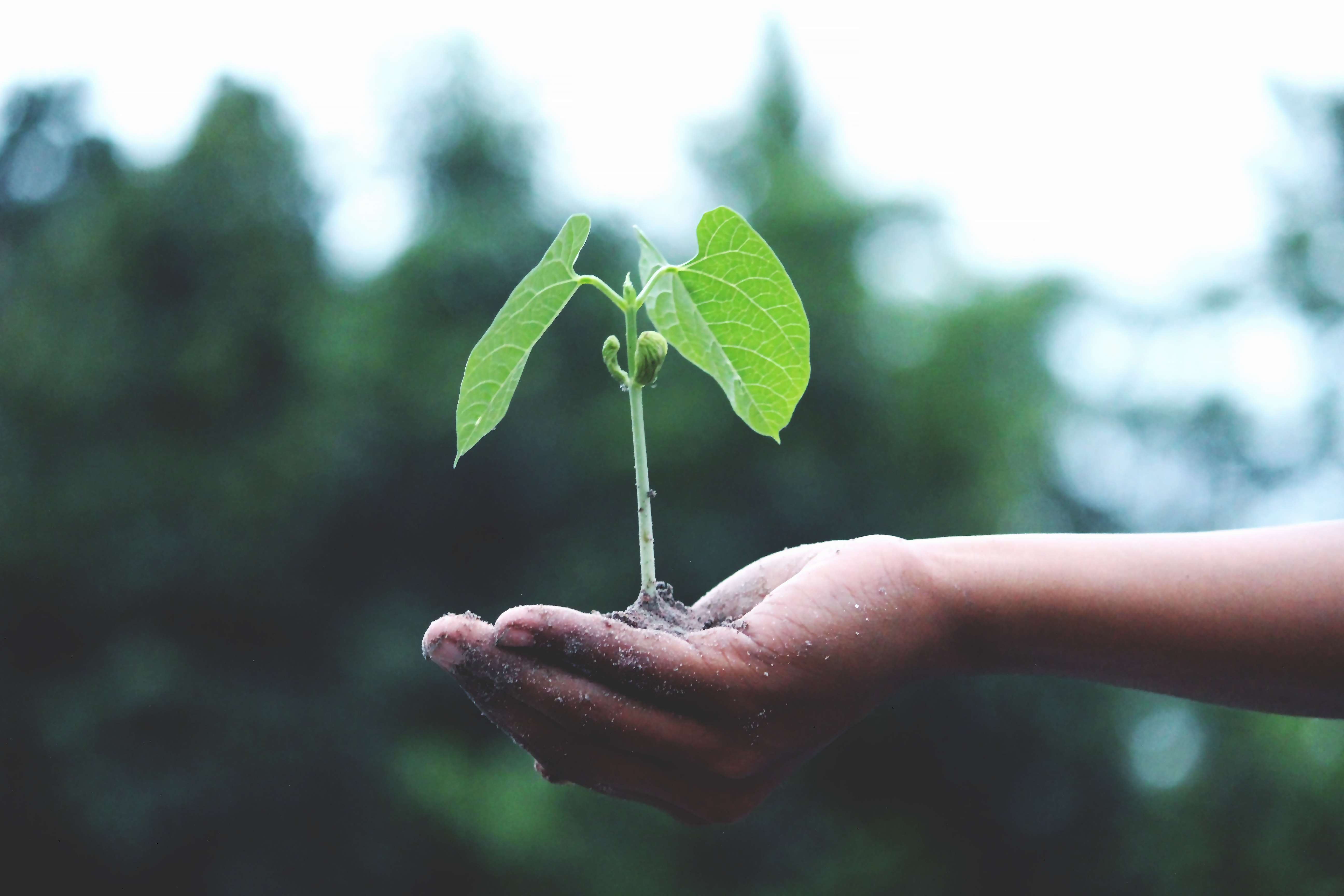In 2019, the New York Times published an article about how the pineapple is the unofficial symbol of infertility and IVF. Apparently, this is because the pineapple symbolizes IVF families as tough on the outside but sweet on the inside, and it encourages women to stand tall and wear a crown, but it also has to do with the incredibly pervasive IVF theory that eating the core of a pineapple immediately after embryo transfer helps the embryo to implant.
When we first started planning for our IVF, I naturally googled, “how to improve odds of IVF success.” Boy oh boy, does the internet have a lot of theories on how to improve your chances during IVF.
These theories include, but are not limited to:
- Eat pineapple core immediately after embryo transfer so the embryo is more likely to stick
- Wear warm socks for two weeks after embryo transfer because embryos don’t like the cold
- Don’t touch receipts at any point during the IVF process
The list of theories and suggestions is endless and overwhelming. Of course, some of the theories and suggestions have a plethora of hefty research and evidence behind them, and others are more like superstitions. But when you’re fighting to become a parent, doing anything to help increase your odds feels good.
I learned early on that a “no stone unturned” approach would be best for my emotional health as we embarked on IVF. I like to think that everything I did leading up to IVF is part of the reason why we got pregnant relatively easily, but of course, I’ll never know if that’s true or not. What I do know, is that doing all of these things made me feel like a Mom. As long as I was taking (theoretical) steps towards my babies, I was Mom-ing, and that feeling got me through the tougher parts of IVF.
This blog is a synthesis of 150+ hours of pouring through data and literature so I could figure out what theories I’d abide by during the process. I wrote all of these citations down for my own use, but I thought it might be helpful for anyone reading who may be about to embark on IVF.
As you’ll see, I’ve developed a bit of a scoring system to rank which IVF theories were most important to me to follow. On a scale of 1-10, I’ve scored each theory in terms of (1) how much scientific evidence there is to support it, and (2) how practical it would be for me to actually follow.
A few disclaimers:
- If all of these things really had a significant impact on IVF success, doctors would be recommending all of them to their patients.
- Obviously I’m not a doctor, I just have access to academic journals. I will link to journal articles in this post. These articles aren’t black and white, but they can be useful with decision making. However, talk to your doctor before making any decisions about your health.
- Most importantly, please don’t think that I believe doing IVF this way is the “right” way, or that I think not doing these things during IVF means you care any less about getting pregnant. Feeling like I had any semblance of influence on my IVF cycle was good for me, at least during this round, but it makes all the sense in the world if that’s an unhealthy approach for others.
Without further ado, here are all the things I did leading up to, and during, our IVF cycle in an attempt to maximize our chances of success:
- Acupuncture
Acupuncture is very popular in the fertility community, and some fertility clinics even have acupuncturists on-site at the clinic. Boston IVF, a popular clinic in our area, explains on their website how acupuncture can help in IVF.
A German study from 2002 gave acupuncture to 80 women undergoing IVF immediately before and after embryo transfer, and compared that group to 80 women undergoing IVF who did not receive acupuncture. The women who received acupuncture before and after embryo transfer had a 43.5% pregnancy rate, whereas the women who did not had a 26.3% pregnancy rate. It is unclear what the differences were between the two groups in terms of live birth rate, which is generally the preferred outcome measure in fertility studies. This study was a catalyst for lots of other acupuncture/IVF studies over the last two decades, as well as acupuncture becoming a common doctor-recommended complementary treatment to IVF.
The most recent meta-analysis I found, from 2019, had interesting conclusions. The authors closely examined 20 high-quality acupuncture/IVF randomized control trials and found that women who did acupuncture during IVF had statistically significant increases in pregnancies and live birth rates, and decreased chances of miscarriage, compared to women who did not do acupuncture at all. However, they also found no differences in women who did acupuncture versus women who did sham acupuncture, as part of a control group (sham acupuncture is basically just sticking needles in a person willy-nilly, as opposed to the proper acupuncture points as defined by Chinese medicine, and it’s the gold standard “control” when assessing for the efficacy of acupuncture). GO FIGURE!
Whether or not acupuncture works for IVF the way the Boston IVF website describes (eg. Improving egg quality via increased blood flow), there is clearly some benefit. It can be gleaned that acupuncture, and even sham acupuncture, is relaxing in some way. Relaxation, of course, leads to stress reduction. I can totally get behind the idea that acupuncture reduces stress, and less stress is good for mind/body wellness, and mind/body wellness is good for IVF. So, I did acupuncture!!
Our fertility clinic did not have in-house acupuncture, though I wouldn’t have been able to do it there anyway given we live so far away (It’s based in a Boston suburb). I found a local acupuncturist on google and started going once per week about 8 weeks prior to our IVF, and then continued to go once a week during our IVF cycle. I had zero expectations going into it, and I was really doing it to check off the box on my “no stone unturned” approach. But Holy. Moly. You can consider me a walking talking billboard for acupuncture because I had an incredibly positive experience. I’ve never been spiritual, and I’ve never been able to meditate, despite trying several different times over the years. Let me tell you – the second those needles went into me (my legs) for the first time, it’s like my brain was transported to another dimension of peace and relaxation. It was so lovely that I thought my first session was a fluke, but this same magical feeling continued every session. Every time those needles went into my legs (it was legs every time), I felt euphoric. It was bizarre and unexpected, and it became something I very much looked forward to every week.
My insurance doesn’t cover acupuncture, otherwise I would have loved to continue it on a weekly basis. I’ve been going once per month since I got pregnant. For that reason, I knocked off a couple points on the “accessibility” score.
Score:
Evidence-based: 8/10
Accessibility: 7/10
2. Diet
As you can imagine, the food is medicine community has a lot of suggestions as to what kind of diet one should eat before and during IVF treatments. The core assumption behind such diet recommendations is that inflammation = infertility issues. There is a ton of research on the relationship between inflammation and fertility, but here is a recent article from 2020 if you’re interested. Good nutrition, on the other hand, equals higher egg quality (which has been studied and proven true in both chickens and humans!).
I decided to go on an anti-inflammatory diet right at the start of the new year. There is compelling research regarding the Mediterranean diet and inflammation/fertility (there is even a whole section on the Mediterranean diet in It Starts with the Egg, which I will reference later), so I started there. I found this 2019 study that suggests adherence to the Mediterranean diet improves the number of embryos yielded in an IVF cycle (though no effect on implantation or pregnancy rate), and this 2018 study that reported a 2.7 times higher likelihood of achieving pregnancy in non-obese women under the age of 35 who adhered to the Mediterranean diet. Both of these studies scored participants’ level of adherence to the diet, and the benefits of the diet were only seen if the participant was highly adherent to the diet. Rebecca Fett, author of It Starts with the Egg, explains that the Mediterranean diet is beneficial for IVF because the diet is abundant in vitamins like folate, B6, and B12, which reduce levels of homocysteine in the body. Homocysteine is known to reduce the number and quality of eggs in IVF cycles and reduces embryo quality.
The other diet that is sometimes suggested for IVF is the ketogenic diet, or keto diet. The keto diet is a high fat, low-to-no carbohydrate diet. There is a very well-known fertility clinic with multiple sites across the US and a site in Canada, called CNY Fertility, and promoting the keto diet for fertility is their thing. They do it on their website here, and their founder and director, Dr. Robert Klitz postulates a whole concept called “Dr. Klitz’s Keto Cure.” They offer a plethora of citations, but I personally cannot find any randomized control trials that assess the effectiveness of the keto diet for IVF in average women going through IVF. I’ve just found studies like this one, which look at the keto diet specifically for overweight women with a diagnosis of polycystic ovarian syndrome (PCOS) (and even this specific study put participants on a “keto” diet that seemed a lot more like the Mediterranean Diet than what Dr. Klitz defines as the keto diet). Safe to say I did not go on a keto diet. I did consume plenty of fat, though, but that’s the norm for me.
Based on research and how I know my own body reacts to certain foods, I went on a diet that completely excluded: alcohol, potatoes, grains*, dairy**, sugar, and processed foods. I lowered my red meat consumption to once per week, and I increased my fish consumption to four times per week, to try to align with the Mediterranean diet.
My diet was also entirely gluten free, but I have celiac disease, so I don’t eat gluten anyway.
Though I *eliminated grains, I did consume quinoa once every two weeks or so, in the name of the Mediterranean diet. I don’t really like quinoa, but I wanted to make sure I was getting enough carbohydrates and following features of the Mediterranean diet. Quinoa is classified as a grain, but it is technically a seed, and I don’t find that it inflames me at all, unlike other grains (even gluten free ones).
I also **eliminated dairy even though I very much enjoy it, with the exception of homemade yogurt. When I make yogurt from scratch, I ferment it for at least 24 hours, which breaks down virtually all the lactose. This makes it much more digestible for me, compared to store bought yogurt. I ate homemade yogurt most days of the week, but no other dairy products.
I love potatoes, but I do often feel bloated after eating them (both regular and sweet potatoes) so I did choose to eliminate them.
But what did you eat!? A lot of fish, chicken and vegetables!! Being in quarantine made this diet relatively easy for me, because I was cooking all of my meals to begin with (we weren’t going out to restaurants yet, and the takeout scene in New Hampshire is bleak, to say the least). This isn’t the first time I’ve done an elimination diet like this given my GI issues, so I already had plenty of experience to fall on. When I go on restrictive diets, I never ever limit myself in calories or quantity, so I never feel deprived or hungry. I’m also a big leftovers person. Even though I ate fish 4x per week, I only ever cooked it for dinner twice a week and ate the leftovers for lunch. I also got less lazy and started reheating my leftovers in the oven, because microwaved fish sounds disgusting. The other thing that made this a manageable choice for me is the wonderful, easy, affordable access to fresh meat and produce we have here in rural New Hampshire.
I would venture to guess that my diet was probably one of the most influential parts of our IVF success. Our embryo attrition rate was much higher than the norm, suggesting my eggs were of high quality – of my mature eggs, 100% fertilized and 66% of those became high quality embryos (the average fertilization rate is 80%, and then on average 30%-50% of those become embryos, as per RMA Fertility).
Worthy of note, I didn’t give up coffee leading up to IVF, but I quit cold turkey on day 1 of the follicle stimulation process – that was a fun headache!
Also worthy of note, I was *planning* on continuing the diet throughout pregnancy because I felt good on it, but all the first trimester food aversions had a different plan for me. Dairy, grains, and potatoes came back into my pregnant life swiftly and with a vengeance!
Score:
Evidence-based: 9.5/10
Accessibility: 7/10
3. Vitamins and supplements
Vitamins and supplements are controversial, for good reason. There tends to be a lot of gray area in the research, and it can be hard to find reliable, trustworthy vitamin and supplement brands. With that being said, our fertility doctor recommended two vitamins to me right off the bat: (1) a prenatal vitamin, and (2), a lot of vitamin D.
Vitamin D: The doctor who did my embryo transfer wrote this blog post about vitamin D and IVF (she was not our regular fertility doctor, but she was the doctor who was on call for our procedure) She basically sums up a 2018 meta-analysis that reports that women with adequate levels of vitamin D are 46% more likely to achieve a clinical pregnancy than women who are deficient in vitamin D. This Cleveland Clinic website reports that about 42% of the U.S. population is deficient in vitamin D, especially Caucasians with minimal sun exposure and people with celiac disease, among other special populations (aka me, living in New Hampshire with celiac disease).
Now, the tricky question is, how much vitamin D is enough? The NIH recommended daily intake for pregnant women is a mere 600 IUs per day. The American Pregnancy Association on the other hand, says the optimal daily vitamin D dosage is 4,000 IUs.
As you can tell from this blog, I’m a big fan of Rebecca Fett, author of It Starts with the Egg, so I followed her guidelines for vitamin D dosing, which were the same guidelines as my doctor’s guidelines. I came in around 4,250 IUs of vitamin per day leading up to IVF (and I currently take about the same dosage in pregnancy, a little less since it’s summer and I spend much more time outside). My 3000 IUs come from vitamin D drops, and the rest comes from my prenatal vitamin and my DHA supplements.
Prenatal Vitamins: My doctor told me to take prenatal vitamins, so this was an easy choice. As our clinic writes on their blog, “prenatal vitamins include folate, which has been shown to help prevent birth defects, improve egg quality, and IVF success rates. Also, Vitamin E can be advantageous for implantation, as studies show that it can increase the thickness of the endometrial lining.” I read no extra research on the topic of prenatal vitamins, I just took them as instructed.
CoQ10: We’re now getting to the vitamins and supplements my doctor did not outright recommend, but also did not advise against. CoQ10 is a nutrient that occurs naturally in the body, and it can improve egg quality by facilitating improved energy in the mitochondria. There is significant research that supports this idea, though one might call it “modern” research. By that, I mean that there are some fertility clinics, like this one in Chicago, that still have posts up on their website referring to CoQ10 as understudied woo-woo. Other fertility clinics, like CCRM (arguably one of the best fertility clinics in the country), explicitly suggest patients (both male and female) supplement with CoQ10 on their website. If you’d like to read some of the recent research on CoQ10 that influenced my decision to take it, you can read it here (suggests CoQ10 preserves egg quality), here (suggests CoQ10 improves egg quality and embryo quality), and here (suggests CoQ10, along with some other adjunctive treatments, can improve pregnancy rates in IVF).
I took CoQ10 twice a day and I stopped once our egg retrieval was done.
DHA: I had already been taking daily fish oil, which is recommended on the CCRM website (aforementioned state-of-the-art fertility clinic based out of Colorado) for fertility. They cite that it reduces inflammation and promotes overall health. This is not to be confused with DHEA, which is another supplement people take for infertility. DHEA is a hormone, and it has been studied to help in IVF for women with diminished ovarian reserve, and women with PCOS are not supposed to take it. I don’t know why it’s recommended/not recommended for those populations, but since I don’t fall into either of those categories, I did not take DHEA or really read any research on it.
Acai: I know acai berry isn’t a supplement per se, but CCRM did a study that concluded high levels of acai berry can significantly improve IVF outcomes for women undergoing IVF. They report that women who supplemented with a specific acai berry supplement for 8-12 weeks prior to an IVF cycle had higher numbers of eggs retrieved , higher number of fertilized embryos, and higher likelihood of chromosomally normal embryos. CCRM hypothesizes that “the restoration of the balance between oxidants and antioxidants in the ovary during the early stages of oocyte development may account for the clinical improvements observed.” It’s a little confusing to me whether or not CCRM is making this claim for ALL women undergoing IVF, or if the benefits are specifically reserved for women of advanced maternal age. The only published study I could find is this one, which suggests that acai berry supplementation is beneficial for women advanced maternal age. I think that the study suggesting it’s better for all women undergoing IVF is ongoing, which is why there aren’t any publications on it. The CCRM study/s also administered their own brand of acai supplementation to women in the trial, called OvaHealth. They claim OvaHealth is “better” than what is available to the public because it is more potent. Since I couldn’t get OvaHealth, I just bought an acai supplement off amazon from a brand that I trust. CCRM also claims they’ve researched acai berry affects on sperm, and that it improves sperm quality. I bought powdered acai at our grocery store and put it in Gunnar’s feeding tube shakes every day for about 8 weeks leading up to his sperm extraction procedure.
Calcium/Magnesium: I took a supplement that had both calcium and magnesium in it. I took the calcium because I cut out dairy, and I took the magnesium because some fertility clinic websites recommended it to reduce inflammation. I didn’t find any compelling peer-reviewed studies on magnesium and IVF, but I’ve taken magnesium before to help me sleep so I started taking it again at night.
Probiotics: I don’t think there is any compelling evidence as to how probiotics can influence IVF success, but there is a lot of fascinating research about probiotics and maternal and fetal development. One randomized double-blind placebo-controlled study found that women who supplemented with a probiotic containing Lactobacillus rhamnosus were significantly less likely to have symptoms of post-partum depression and post-partum anxiety. Another study found that babies with higher levels of Lactobacillus and Bifidobacteria were less likely to cry and fuss during the first three months of life. I won’t even attempt to decipher the microbiome-gut-brain-connection at work here, but the idea of it was compelling enough for me to start taking a probiotic that contains Lactobacillus rhamnosus and Bifidobacteria!
Score:
Evidence-based: 6/10
Accessibility: 6/10
4. Minimize Exposure to Endocrine Disruptors
Going through IVF was my grand welcome to the world of endocrine disruptors. It seems as though the New York Times writes about endocrine disruptors every few months, and it has become a bit of a fear-mongering buzzword. Put most simply, endocrine disruptors are chemicals that can negatively affect human health and reproductive systems. They’re in a whole bunch of stuff – plastic, drinking water, baby car seats, beauty products, RECEIPTS!!!
There is significant research on how exposure to endocrine disruptors may impact reproductive health in general, and also how exposure may impact IVF. This article from 2016 explains how endocrine disruptors can contribute to a person developing polycystic ovarian syndrome (PCOS) – one of the most common causes of infertility. This 2020 study out of New Jersey suggests endocrine disrupters, particularly phthalates, can lead to lower numbers of eggs retrieved in an IVF cycle. This 2020 review suggests exposure to endocrine disruptor chemicals can lead to defects in embryos, and concludes that “exposure to various endocrine-disrupting pesticides on fertility is now a public health issue that urgently requires the performance of more epidemiological studies – especially those focused on female fertility and women in IVF [programs].”
There are tons of other studies just like these. Woof.
Upon obtaining this new knowledge about endocrine disruptors, I set out to rid our home of them to the best of my ability. In order to maintain my sanity, I accepted early on that it would be impossible to completely eliminate my exposure to endocrine disruptors. These are the areas I targeted:
Beauty Products/Personal Care Products: Like many people, I stopped wearing makeup during the pandemic! As such, most of my makeup was old/expired, and I slowly replaced it with “clean” products. I love the Mineral Fusion brand, but I know a lot of people love beautycounter for clean products!
Since I still haven’t really worn makeup in a while, the bigger shift was tackling the other personal care products in our home. We mostly use antibacterial hand soap and dish soap during the winter, and I learned this is a big no-no. We also had a couple “Christmas-scented” soaps, and “fragrance” is a very bad word in the land of endocrine disruptors. I now almost exclusively buy Seventh Generation brand hand and dish soap. I had already (unknowingly) been using clean shampoo and conditioner, but I had to replace Gunnar’s shampoo.
Another big offender is our home is deodorant. People, I tried to switch to natural deodorant, but 99% of it stinks (pun-intended). When I finally found one that actually worked for me, it froze in its container on my bathroom counter on a particularly cold New Hampshire day. I definitely recommend this brand if you live in a warmer climate, but for now I’ve been practicing self-compassion and not beating myself up for sticking with good ol’ fashioned Secret Clinical.
Plastics: This was relatively easy – I threw out the couple of plastic food storage containers that we had (though we didn’t microwave them or put them in the dishwasher to begin with) and replaced them with glass storage containers.
I threw out my huge, beloved Contigo water bottle that I used on a daily basis and replaced it with a stainless-steel one.
With that being said, I’m currently without my stainless-steel water bottle since I’m at my parent’s house, and I’m drinking a plastic-bottled Poland Spring as I type. Again, self-compassion.
Kitchen Items: Another big offender in regards to endocrine disruptors is nonstick cookware. I have heard that more expensive, “nicer” nonstick cookware isn’t as toxic, but pretty much all our pots and pans were cheap nonstick stuff that we bought at HomeGoods.
Of course, replacing all your cookware would generally be expensive and inaccessible, but we lucked out because we were about to have a wedding and thus, we had a wedding registry. We registered for stainless steel pots and pans, and that’s how we were able to replace our nonstick items.
Receipts: I would imagine that endocrine disruptor exposure from receipts is more of a concern for people who handle receipts daily in their work, but I stopped asking for receipts when I grocery shopped, anyway.
Water: I still drink our tap water (I repeat, self-compassion). However, I’ve heard the gold standard of eliminating exposure to endocrine disruptors from drinking water is to get one of these (pricey) Berkey Filters.
Score:
Evidence-based: 8/10
Accessibility: 3/10
5. Medical Clowning/Laughing
Here is a big 180 from the scary world of endocrine disruptors and into the world of clowns (ok, maybe also scary to some). This is by far my favorite complementary treatment to IVF. I wish I remembered how/where I initially stumbled upon the theory that laughing immediately after embryo transfer improves implantation rates, because it is just so funny and wonderful.
A 2006 trial at the Assaf Harofeh Medical Center’s IVF Unit in Israel offered medical clowning to women who were undergoing embryo transfer every other Thursday over a ten month period (study group). Women who were undergoing embryo transfers on Thursdays where there was not a medical clown present were recruited as a control (control group). Yes, you read that right – CLOWNS! The women in the study group received a 10-15-minute session of clowning with a specially trained medical clown (also referred to as “Clown Doctors”) just after embryo transfer. The clowning entailed jokes, tricks, and apparently even a little magic.
The results were extraordinary… A total of 186 patients were included in the study – 93 in the study group, and 93 in the control group. 33 patients out of the 93 in the study group conceived, or, 35.5% per embryo transfer, whereas only 18 patients out of the 93 in the control group conceived, or, 19.3% per embryo transfer.
This study has not been replicated, to my knowledge, although the original author did publish a paper in 2016 about patient preferences of medical clowning post-embryo transfer versus simply watching a humorous video clip post-embryo transfer. He found that patients preferred the in-person clown to the video – lol.
Similar to my conclusion re: acupuncture, it’s easy to get on board with the theory that anything that reduces stress is a boon to fertility. There is a more scientific explanation for how laughter impacts the biology of fertility, but it involves fancy concepts like neuroendocrine pathways and nonovarian stress reduction, so you’re on your own if you want to know more about that.
Due to COVID, I had to attend my embryo transfer by myself while Gunnar waited in the car. As I wrote about on the blog previously, the whole embryo transfer ordeal is pretty brief and easy. Upon leaving my embryo transfer and getting into the car with Gunnar, we did two things first: (1) we took a photo with our embryo, (2) we laughed! I immediately pulled out my phone, and we watched a couple minutes of a funny video clip that I knew would make me laugh. If you must know… the clip was the first five minutes of the newest Netflix movie by the Adam Sandler production company, starring David Spade, called “The Wrong Missy.” It is exceptionally stupid, and I can’t recommend the movie as a whole given how ridiculous it is, but the opening scene is the kind of dumb, cringey comedy that’s right up my alley.
Score:
Evidence-based: 5/10
Accessibility: 10/10
6. IVF Superstitions
There are a lot of IVF superstitions like the ones I mentioned at the very beginning of the blog. In terms of scientific evidence, most of them are duds, but in terms of anecdotal evidence, a lot of us going through IVF appreciate them. Here are some of them:
Pineapple Core: Probably the most mainstream IVF theory is that eating pineapple core after your embryo transfer increases chances of implantation. The “scientific basis” for this belief is that pineapple core contains bromelain, and bromelain supposedly is an anti-inflammatory and anti-coagulant, which in theory would aid one’s endometrial lining. There is no scholarly evidence on this. I do like pineapple, so I ate some during the week after my embryo transfer, mostly for fun. I didn’t eat the pineapple “core” however, because I imagine it’s pretty rough? I just bought the cut up chunks from the grocery store!
McDonald’s French Fries: There is another pervasive superstition that eating McDonald’s French Fries after an embryo transfer helps implantation. I *think* the theory behind this is that sodium helps to prevent ovarian hyperstimulation syndrome (a possible complication of egg retrieval) and preventing such a complication must be good for embryo transfer. This doesn’t make a ton of sense to me because if you actually had ovarian hyperstimulation syndrome, you wouldn’t be doing an embryo transfer. I passed on the McDonald’s French fries, but maybe I was just bitter about this superstition because my self-prescribed fertility diet didn’t include any potatoes.
Brazil Nuts: Another food superstition! This theory suggests that eating brazil nuts prior to an IVF cycle and during that cycle is beneficial, because Brazil nuts are high in selenium which may help thicken the uterine lining and increase blood flow to the uterus. There is research connecting selenium (rather, selenium deficiency…) and reproductive health, but it’s still a bit of a stretch to suggest eating brazil nuts will improve IVF outcomes. With that being said, I ate a brazil nut every day leading up to our IVF cycle and during the cycle itself. Why not? I figured they were otherwise a healthy snack, so may as well.
Warm Socks: Chinese medicine suggests that warm feet = warm uterus = happy embryo. This has not been studied in any Western medicine journals (that I could find), but that kind of underscores the difference between Eastern and Western medicine, anyway. Gunnar surprised me with a cute pair of socks that he got for me from Etsy, and I wore them during transfer and the whole afternoon after!
Score:
Evidence-based: 2/10
Accessibility: 9/10
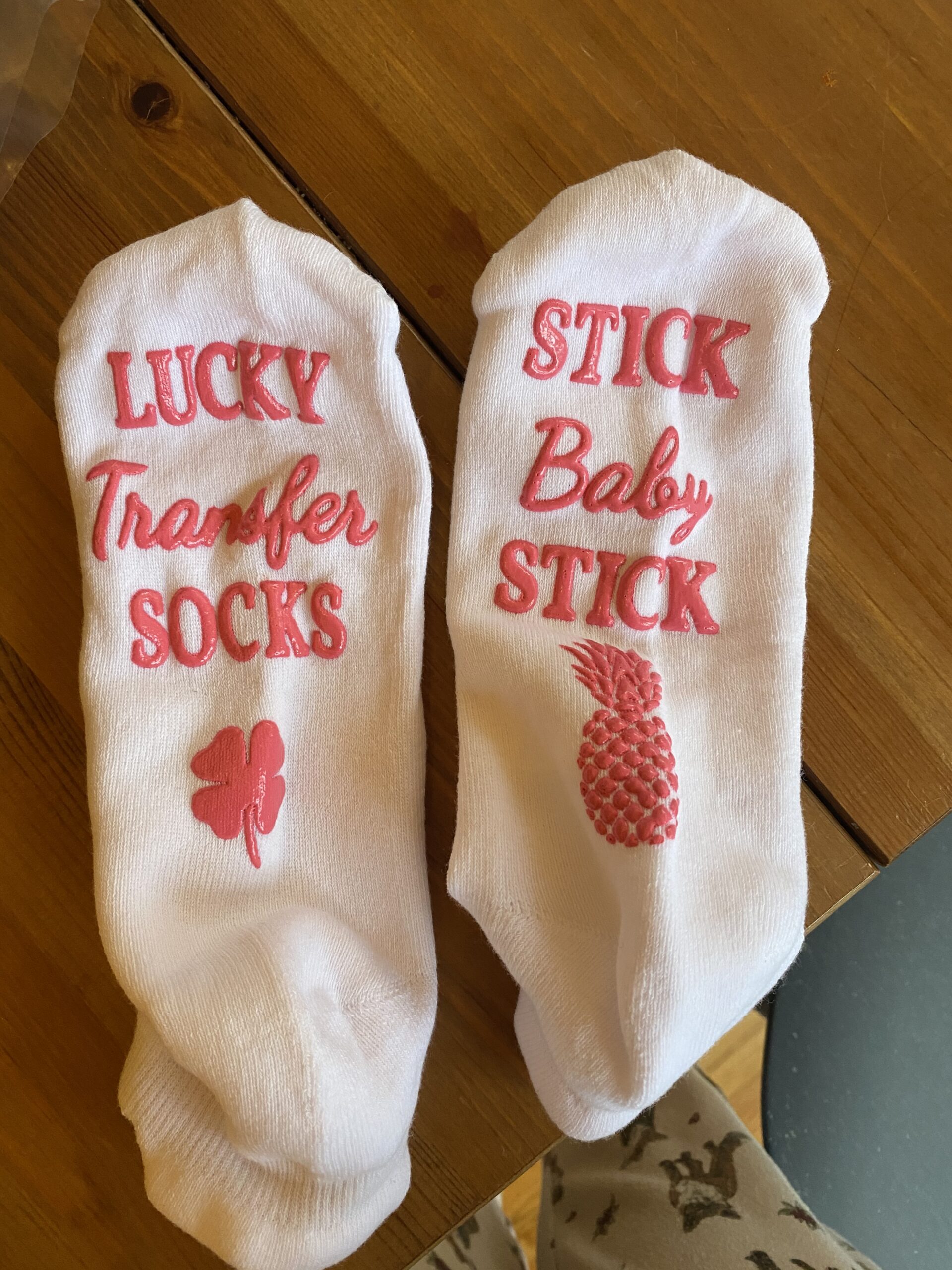
7. Resources
Books: I read a few books leading up to our IVF cycle, and I found these two to be the most helpful:
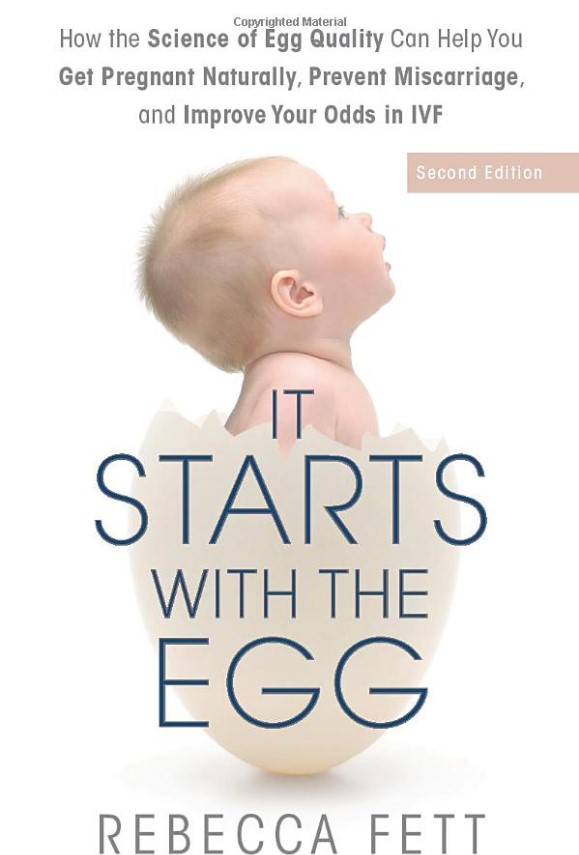
It Starts with the Egg: How the Science of Egg Quality Can Help You Get Pregnant Naturally, Prevent Miscarriage, and Improve Your Odds in IVF by Rebecca Fett
This book is a lifeline for a lot of people undergoing IVF or dealing with infertility. Much of the research I did about improving our chances for IVF success was inspired by concepts from this book. I also highly recommend her follow up book, Brain Health from Birth: Nurturing Brain Development During Pregnancy and the First Year.
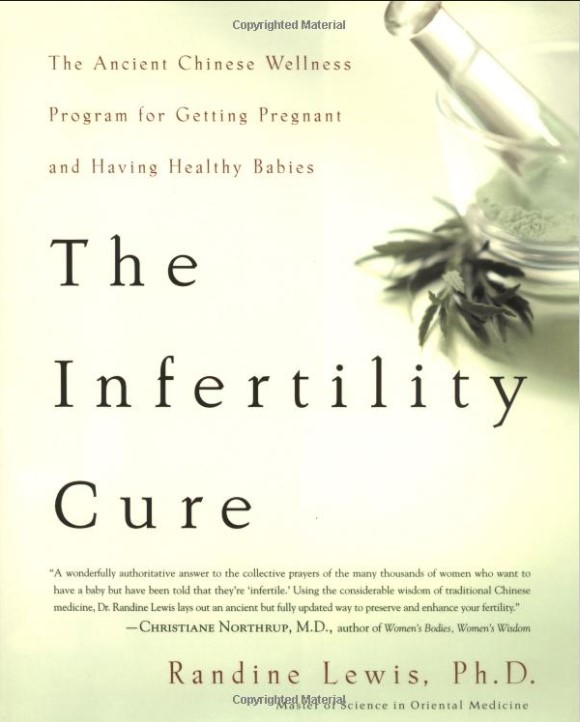
The Infertility Cure: The Ancient Chinese Wellness Program for Getting Pregnant and Having Healthy Babies by Randine Lewis
This book is about a Western-trained doctor who turns to Eastern-medicine when she struggles with her own fertility issues. It’s a deep (and often complex) dive into acupuncture, diet, and Chinese herbal medicine, and how Eastern medicine can treat infertility. The author founded a Houston-based women’s reproductive health clinic, and now offers retreats for women with fertility issues looking to engage in Eastern medicine treatments. This book was interesting and provided me an entirely new perspective, and is part of the reason I decided to go forth with acupuncture.
Websites: By far the most helpful website for IVF information is www.fertilityiq.com. It functions as a database of every fertility clinic and doctor in the US, complete with reviews and success rates. It also is a gold mine of easy-to-digest information about complex IVF processes, although a lot of the content is not free. I paid for the ICSI course and it was worth it!
Facebook: I joined a Facebook support group for women undergoing IVF at the handful of clinics of in the Boston area, and it was, and still is, an absolutely wonderful, supportive community. I know that “supportive Facebook group” sounds like an oxymoron, but this particular group is moderated so well that it is only ever helpful and kind. It has been so, so helpful to be able to ask random questions to a group of women who have been through it all and have immediate answers. If you’re going through IVF, I highly suggest finding a Facebook support group for your local clinics!
Score:
Evidence-based: 9/10
Accessibility: 9/10
8. Things I Didn’t Do
There are a couple of IVF theories that I just didn’t look into all that much, because they weren’t particularly accessible to me. For the sake of being as comprehensive as possible, I’ll include them below if you’re interested.
Seed Cycling: Seed cycling, which is literally eating different seeds during different parts of your menstrual cycle, is believed to balance hormones. Since we had male factor infertility, this didn’t seem that relevant to me and also seems like a PITA 🙂
Red Light Therapy: CNY Fertility, the same well-known clinic referenced above that touts a keto diet for fertility, also advocates for red light therapy on their website. They go so far as to claim it may help embryo implantation by speeding up the body’s healing process post-transfer. I could only find scholarly literature on light therapy and fertility in fish and animals, so I didn’t put any eggs in this basket.
Score:
Evidence-based: 1/10
Accessibility: 2/10
If you’ve come this far into the blog, thank you for reading! This is probably the longest post I’ll ever write, and I hope it’s helpful for anyone preparing for IVF who has all the same questions I had at the beginning. Whenever I told my acupuncturist about something I read in the scholarly literature to boost our chances of IVF success, I prefaced it by saying, “I know I’m crazy, but I was reading that…” He eventually reframed this for me by saying I’m not “crazy,” I’m just “curious.” This blog is a culmination of my curiosity about data-driven IVF success theories, and I hope it can help someone!

